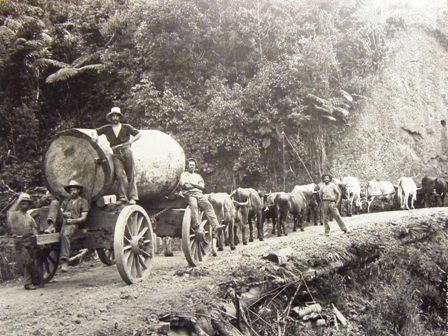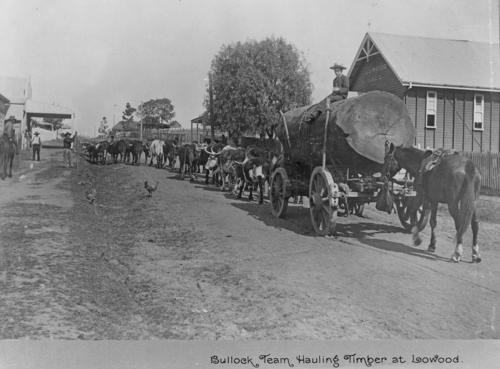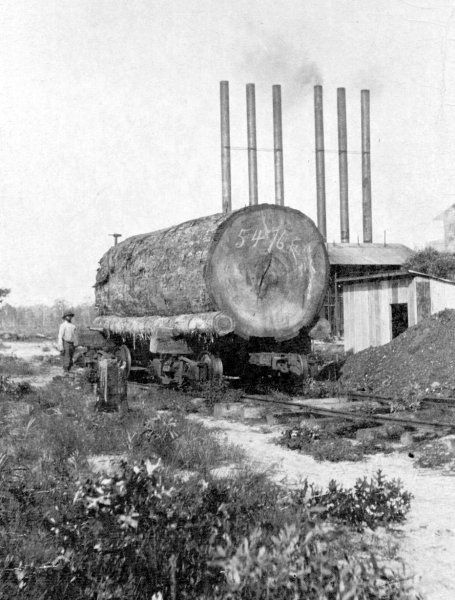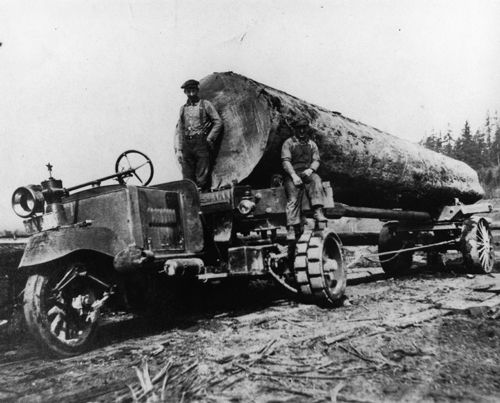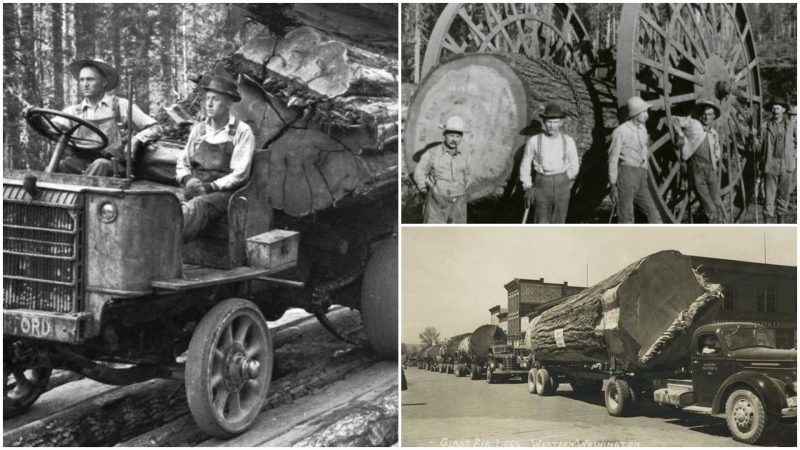
Big trees call for BIG everything. But, before we look at the machines that moved the monster logs, lets have a brief look at the history of logging in the USA.
Logging’s roots in America stretch back to the early 1600s. From the arrival of settlers in Jamestown in 1607, lumber was essential to the North American economy. Shipbuilding fueled the need for lumber and the demand increased exponentially with the advent of the Industrial Revolution. By the early 1830s, Bangor, Maine, was the world’s biggest shipping port for lumber, with over 8.7 trillion board feet moved out of the area between 1832 and 1888, according to the Patten Lumberman’s Museum. In the mid-1800s, the process of making paper from wood pulp was established. William Rittenhouse founded America’s first paper mill in Germantown, Pennsylvania, in 1690, but until the middle of the 19th century, paper was produced from rags and other materials.

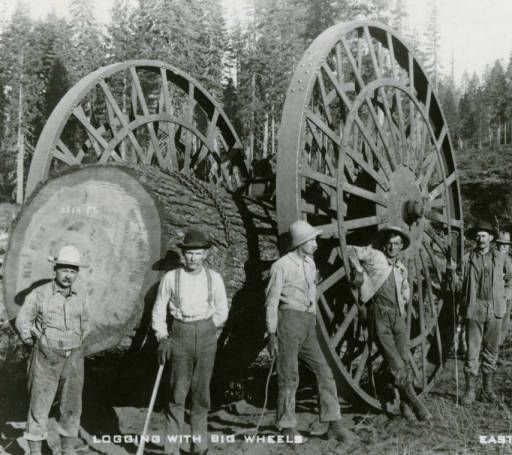

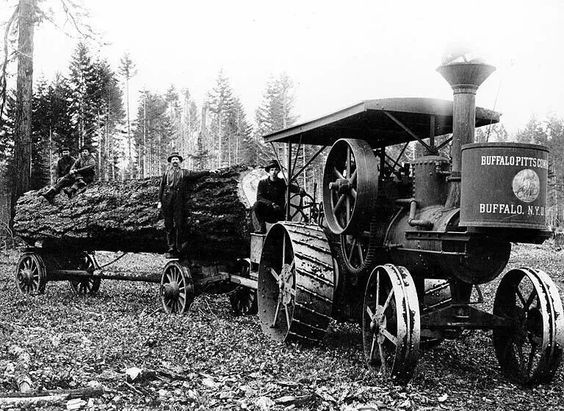

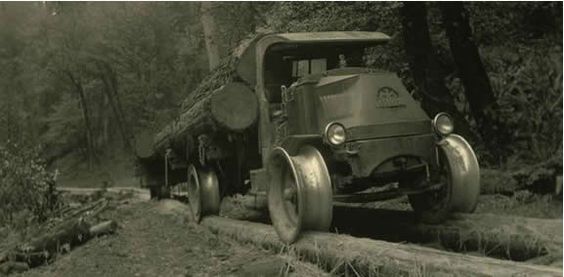
The American industrial revolution caused the national demand for timber to spike. Prior to the Civil War, more than ninety percent of the nation’s energy came from wood, fueling the great transportation vehicles of the era. As Americans settled the timber-starved Great Plains, they needed material from the lumber-rich parts of the nation with which to build their cities. The burgeoning railroad industry accounted for a fourth of the national lumber demand and required the product to build rail cars and stations, fashion ties, and power trains. Even as the coal began to replace wood as an energy source, the coal mining industry itself needed lumber to support its mining structures and create its own rail beds.
Technological development helped the industry meet the soaring demand. New methods of transporting lumber, like the steam engine, provided the means to log further inland and away from water. New machines such as the circular saw and the band saw allowed forests to be felled with significantly improved efficiency.[45] The resulting increased timber production saw New England forests become rapidly depleted, and American loggers began methodically cutting their way south and west in search of new forests. By 1840, upstate New York and Pennsylvania formed the seat of the industry. By 1880 the Great Lakes region dominated logging, with Michigan producing more lumber than any other state



Early loggers and settlers cut timber near water and moved further away as the wood supply on that land was depleted. The water made it easy to move timber to mills and overseas, but as loggers were forced more inland, they needed to develop new methods of transporting their product. One popular technique for hauling lumber was to use horses and oxen to drag logs over skid roads and rough tracks through the woods. Log flumes, now known because of theme park rides, got their start as a way to move logs via manmade troughs. If loggers were working near a stream, log drivers could be used to guide logs to more substantial waterways, where they were tied together in rafts. (The sport of logrolling, in which people compete to see who can remain standing the longest on a rolling log in the water, grew out of the loggers’ actions.)
Another method for moving lumber to market was via crude railroads constructed from the very lumber they were designed to transport. Once the logs reached a main waterway, they were sent to sorting yards and then either to a mill, where they were transformed into a usable product or exported to places as far away as Australia and China.
Following the onset of the Great Depression, many companies were forced to shut down. Total production of lumber fell at a devastating rate, from 35 billion board feet in 1920 to 10 billion board feet in 1932. Moreover, the steady decline of gross income, net profits, and increased consumption of cement and steel products, exacerbated the decline of lumber production.


